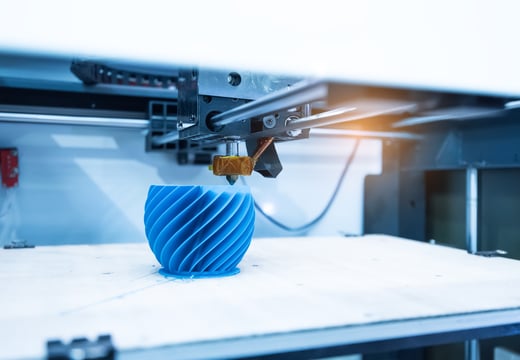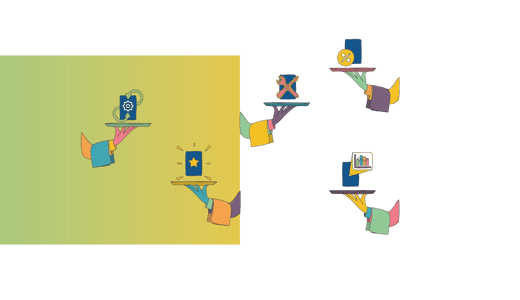
Are your patents strong enough? Read our 7 point checklist and find out
April 2023
By Simon Jelley, Engineer and Principal Consultant at 42T
What are the most common errors when using patents?
.jpg?width=749&height=386&name=shutterstock_1718689207%20KM%20crop%20(1).jpg)
If you’re a technology entrepreneur or an SME, then applying for patents can be a great way to appear inventive, attract investors or to take advantage of tax breaks like the UK’s Patent Box scheme. But for larger companies the motivations are different.
In their case, building an IP portfolio is much more about protecting sales revenue and market share:
- to prevent products being cloned, particularly when manufacturing in the Far East
- to discourage or delay fast followers by driving up their development costs
- to prevent competitors that might otherwise follow them into an emerging market, or
- to close a system so that consumables can be tied-in (such as printer cartridges)

However, there is an alternative explanation for why lots of patents never get tested in court.
When a company discovers a competitor has just launched a product into their market, they rush to check their patent portfolios, and then realise that what’s just been launched doesn’t actually infringe their patent. The company’s patent is still a legitimate piece of paper, but it is no longer effective in protecting their position.
In our experience as product development consultants, we have found there are seven common reasons why patents often fail to protect a company’s technology innovations as originally intended.
Not protecting the inventive step
In some cases, technical teams spend so much time developing a particularly technically-challenging aspect of a new product that they fail to spot that that wasn’t actually the inventive bit when briefing their patent attorneys.

Not prioritising key features
Although patent attorneys are skilled and experienced in delivering a good claims structure, they rely on the technical team to correctly articulate the significance of certain features.
If those details are not properly communicated, then the patent may end up with a claims structure that under-protects key features. Or it may have a claims structure that unintentionally makes it easier for competitors to design around it.
Focusing on specific embodiments
One of the most common mistakes is making the patent so specific that it protects a specific embodiment of a product, not the enabling technology.
For example, if a patent attorney had been told that a particular invention had been designed to use electromagnets (when permanent magnets would work equally well) and didn’t challenge the technical team, then that feature could end up going into Claim 1.
However, all the fall-back options would then be killed off when a competitor gets a similar product working with a different type of magnet.
Amending designs after filing
If the product design or product prototype changes, then it’s important to ensure the patent protects the current invention rather than an earlier version of it. Otherwise a competitor no longer needs to come up with anything particularly inventive to get around it.
In fact, they can just clone the product - material for material, and dimension for dimension - because the patent isn’t for the product that’s available on shelves and in catalogues.

Using wrong numbers or definitions
If a patent attorney is accidentally given the wrong dimension or specification for something which becomes referenced in Claim 1, then all the claims will be undermined.
For example, if the technical team provides a main body diameter but when it is used in the patent it’s accidentally defined as the external diameter including a flange then the main claim (and all dependent claims) may fail to apply to the product.
Not considering alternative approaches
Sometimes patents are written simply to protect the specific way that the problem was solved, and companies don’t consider or patent alternative approaches that competitors could exploit to achieve the same result.
It’s also worth remembering that while another technology might not be ideal for the company itself, a competitor might take a different view because of its suppliers, distribution channels, manufacturing partners, and so on.
Being too industry focused
Even if they are not immediately on the company’s horizon, it is worth thinking through all potential applications and markets for a new technology.
For example: the scope of a patent might be unintentionally narrowed to include, for example, all food and drink applications, when it could also be a multi-billion-dollar technology in pharmaceutical manufacture.

Closing holes after a patent has been filed or even after product launch is often still possible, but it is always more challenging and expensive. However, it is one of the areas where involving an external product design consultancy can be invaluable in bringing fresh perspectives, as well as experience in analytical tools (such as TRIZ and MECE) and the use of structured innovation processes.
In the case of patents, where the constraint for mapping new ideas is the patent itself, the design team could help to identify alternative approaches and workarounds to deliver the required functionality without infringement. And, of course, those ideas or technologies could originate from outside the company’s own industry or areas of expertise.
Having identified any weaknesses within its core patents, what a company then does will depend on its own situation. However, one option is to introduce new filings with scopes that can close any loopholes before a competitor discovers them and decides to develop a competitive offering: safe in the knowledge there is no risk of being sued or becoming embroiled in infringement proceedings.

answers@42T.com | +44 (0)1480 302700 | LinkedIn: Simon
As Head of Innovation at 42 Technology, Simon has a long track record in IP-constrained innovation. He helps clients to develop innovative and market-winning products and processes, to strengthen their patent filings and portfolios, to fully utilise the value of their existing IP in new markets or applications, and to unlock significant markets by innovating around challenging third-party IP restrictions.
Share this article:
Related Articles

Innovation, Product Design
Embracing innovation: the future of product development

Innovation, 2024 Technology Trends
AI powered innovation - the disrupting force transforming the market

Innovation, 2024 Technology Trends
Service-dominant logic - innovation process next steps

What will you ask us today?
We believe in asking the right questions to drive innovation; when we know the right questions, we generate the ideas to answer them.

